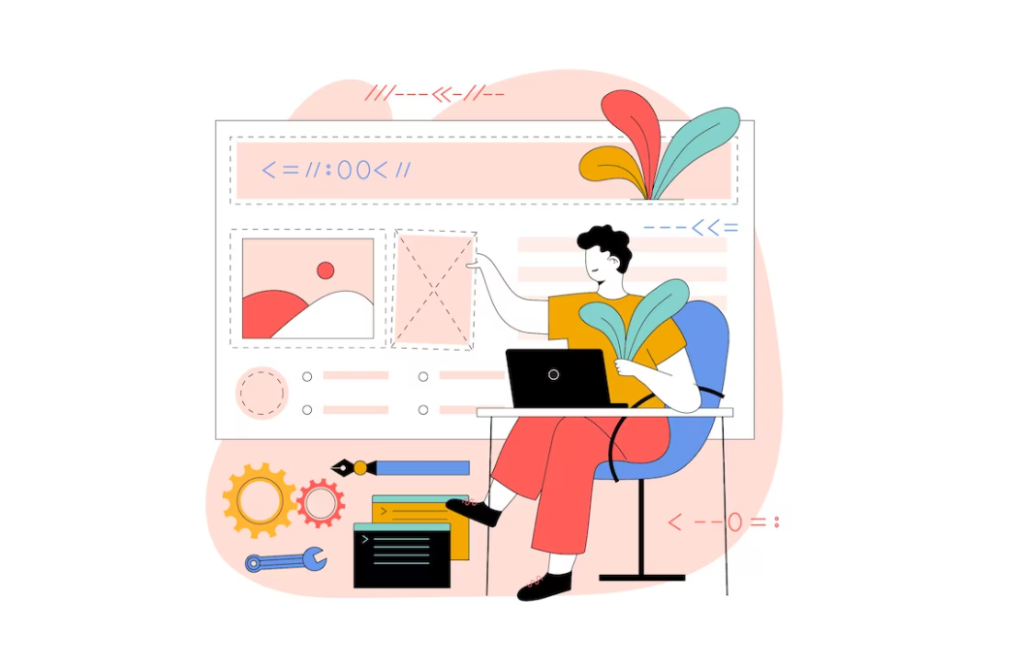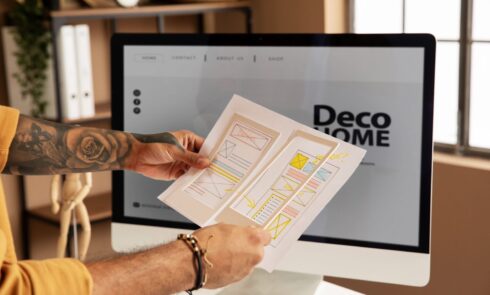Revitalize your design process with these indispensable Figma tools. Figma stands out for its ability to craft stunning prototypes and its vast array of plugins, making it a favorite among designers. Moreover, there exists a plethora of supplementary Figma tools that seamlessly integrate into your workflow, amplifying efficiency and ease.
In this guide, we’ll explore a selection of invaluable Figma design tools tailored to streamline your web design journey, from initial concepts to the realization of fully functional websites using no-code solutions. Let’s delve into the details!
Stark
For those seeking to elevate the accessibility of their web designs, Stark emerges as a potent ally in refining your creations. It arms designers with a suite of features aimed at assessing if their designs cater adequately to individuals with visual challenges.
- Contrast Evaluation: Embedded within Stark is a contrast evaluation feature that verifies adherence to the Web Content Accessibility Guidelines (WCAG), mandating a contrast ratio of 4.5:1 for standard text and 3:1 for larger fonts. This functionality is pivotal in guaranteeing that your content remains legible to every viewer;
- Visual Impairment Emulation: Stark also introduces a way to perceive your designs from the perspective of those experiencing various vision impairments, including color blindness or difficulties with focusing. This tool is indispensable for a thorough appraisal of your design’s accessibility;
- Font Legibility Assessment: With Stark, you can analyze if your font choices are suitable for individuals with visual impairments. This feature is dedicated to confirming that your text is presented in a manner that facilitates effortless reading for everyone.
Batch Styler
For those navigating the landscape of Figma design tools in search of efficiencies and time-saving features, Batch Styler emerges as a notable solution. This tool empowers you to implement widespread adjustments to elements like colors and fonts across your designs with ease. By automating what would typically be a labor-intensive manual task, Batch Styler facilitates a rapid design process and promotes uniformity in all your Figma endeavors.
Roller
Another essential tool in the Figma toolkit is Roller. It distinguishes itself by offering a comprehensive analysis of your Figma projects, examining aspects like color schemes, border details, and spacing with a fine-tooth comb. Roller not only identifies inconsistencies in your design but also enables automatic corrections. This tool is key to achieving a cohesive and refined aesthetic with minimal effort, streamlining the design refinement process to be both smooth and effective.

Color Palettes
Crafting captivating color combinations for web designs is a desire shared by all designers, yet it can be challenging to devise palettes independently. Color Palettes offers a staggering selection of over 1500 options, encompassing a wide spectrum of colors and hues. Moreover, you can easily navigate through their extensive library using color codes or palette names, facilitating the discovery of desired combinations. As one of the most indispensable Figma design tools for discovering exquisite color schemes, Color Palettes is an indispensable asset for every web designer.
Blobs
Embracing the inclusion of amorphous shapes in Figma projects shouldn’t be confined to those equipped with advanced graphics software. Blobs emerges as a favored choice among Figma design tools for crafting quirky forms directly within the app.
The playful element of randomness is admired, where a simple click of the refresh button unveils a new blob each time. Adjusting the shape’s intricacy and distinctiveness opens avenues for diverse creative expressions. Once satisfied with a design, it seamlessly integrates into a Figma project, saved in the vector-based SVG format. For the creation of imaginative shapes, Blobs stands out as one of the simplest Figma design tools available.
Get Waves
Similar to Blobs, Get Waves excels in the realm of Figma design tools, facilitating the generation of geometric forms without necessitating external graphic design software. Offering options to produce sine, square, and triangle waves, alongside a user-friendly interface, Get Waves empowers users to create a myriad of wave graphics in the SVG format, seamlessly integrable into Figma prototypes.
Content Reel
For those who have struggled with organizing content assets and sharing them seamlessly, Content Reel emerges as a valuable aid in managing creative resources efficiently. Recognized for its productivity-enhancing capabilities, it ranks among the most beneficial Figma design tools for streamlining the prototyping process.
Accessing icons, graphics, and text strings from Content Reel’s extensive library or utilizing custom uploads significantly accelerates the design process by centralizing these elements for easy retrieval.
Remove BG
The laborious task of removing backgrounds from photos is now made effortless with Figma design tools like Remove BG. By harnessing the power of AI, this tool swiftly eliminates backgrounds, leaving behind clean images ready to be integrated into your Figma projects, thereby saving substantial time and effort.

Web Gradients
In search of stunning gradients? Look no further than Web Gradients, offering a plethora of captivating options to fulfill your aesthetic needs. From elegantly crafted gradients like Warm Flame, Night Peach, to Malibu Beach, each gradient not only looks exquisite but also bears wonderfully evocative names, ensuring a perfect fit for your creations.
Vev Figma Plugin
Many designers face the challenge of transitioning their prototypes from Figma to the web, often requiring the involvement of developers to bring them to life. This process not only poses hurdles for seamlessly transitioning from design to web but also complicates testing transitions or animations during the design phase to ensure their functionality.
Figma Import feature addresses these challenges by enabling designers to bypass the handoff process, instantly converting their designs into fully functional websites with code. Once imported into Vev, designers can effortlessly enhance interactivity using animation tools and pre-coded components, while also fine-tuning the experience across all breakpoints. This option is ideal for those seeking end-to-end creative control or aiming to independently launch websites.
Importing a Figma project into Vev offers several key advantages:
- Import entire designs at once, eliminating the need for cumbersome copying and pasting;
- Retain most of the design’s styles and features, eliminating the need to export assets and restyle them;
- Share prototypes with clients or team members, reflecting the final look and feel of the end product rather than static prototypes.
For optimal results when using Vev’s Figma Import feature, it is recommended the following:
- Ensure your Figma project is well-organized and consistently styled, with aligned folders and layers;
- Use the most current version of Figma to ensure proper layout importation;
- Import at a single breakpoint for seamless integration.
Conclusion
Figma design tools have evolved to greatly improve the process of digital design. They not only simplify the task of creating aesthetic templates and prototypes but also streamline the process, saving time and enhancing productivity. The tools, such as Stark, Batch Styler, Roller, and others, each play a unique role in making the designer’s journey smoother and more efficient. Incorporating these tools into your Figma workflow can dramatically elevate your design capabilities and output. As the digital design landscape continues to evolve, so will these tools, constantly offering fresh solutions to meet the ever-changing needs of digital designers around the world.

